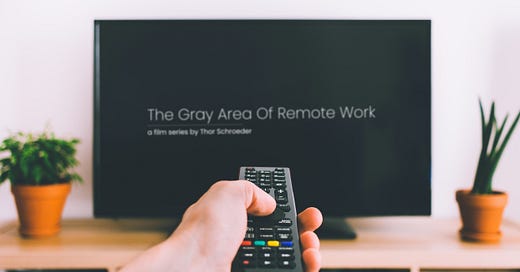As most of you know, I have been working on my docu-series for the past few months. I am very excited to say that two episodes are live, two more episodes to go!
One of my biggest focuses when deciding to create this series was accessibility. I think I delivered on that and I’d love to teach you what I have learned.
Accessibility is brought up a lot in the tech space. It is a hot topic when talking to designers, developers, and product managers. You rarely hear filmmakers speaking this word. As a person with a product and design background, I too know the importance of accessibility and wanted to make sure my films, specifically this film series, were as accessible as possible.
Firstly, what do I mean by accessible? I mean that the film is watchable by anyone who attempts to watch it.
I am accounting for:
Audio levels
Contrast levels
Captions
A clear visual palette
Accessibility is different for each product or type of content you are making. There are standards and guidelines on an industry-by-industry basis. Film has guidelines, but the bar is low.
One thing you might not know about me is that until recently, I was actually Head of Product for a company that makes apps for TV applications. So I am very familiar with accessibility when it comes to the viewer's perspective. I focused on a user experience level, but this allowed me to understand what the viewer should expect from the filmmaker too.
So, what did I do to make this series accessible?
First, you have to make sure that the raw video and audio are solid. This means minimal clipping of highlights and shadows in your video as well as limiting the clipping of your audio. If something is too bright or too loud it is very hard or impossible to fix it during editing. When you have good audio and video, you can massage the light, color, and audio levels all within an accessible amount that most people should be able to see and hear. I like to have my audio between -12 and -6db, with some high notes bordering 0db. This will allow most people to get their viewing device to a reasonable level of audio.
Secondly, contrast levels. I am not speaking of the video itself. When it comes to the film itself, the look should be left up to your creative limits. If you want a shot dark, light, or somewhat washed out – those are creative decisions. I mean the contrast levels of assets, text, and other visual effects. For this series, my main subjects are the on-screen talent, the interviewees. In natural documentary fashion, they need to be introduced. I did this by using a lower third. This lower third has white text and a black background with 90% opacity. This allows for high contrast, so someone can read it easily, but also transparent enough that the person shows through enough. I also repeated the process with the film titles and end credits. This not only makes the films have a high contrast level, but a visual consistency, which lowers cognitive load.
Captions are generally what people think about when thinking about accessibility as it relates to video. This is essential to accessible video, though I still see a lot of smaller filmmakers skimping here. Captions are not only key for deaf people, but also for people with limited hearing and other disabilities. Even temporarily disabled viewers, such as people with stuffy ears due to allergies, or waterlogged ears can be affected. Yes, most platforms have some form of auto-generated captions, but they are all using different engines and don't always allow the user to control the styling of captions which likely does not allow all users to partake. So I decided to handle captions myself, with the help of Adobe speech to text and new captions tools. This made the creation and editing of the captions so much smoother than in the past.
Going this route, rather than relying on the platforms captions – I was able to have consistent captions and decide which platforms I want captions baked in, such as IGTV.
Lastly, the clear visual pallet is something less defined. I mentioned it earlier when I said: "lowers cognitive load". Like the principles of minimalism – lessening clutter and simplifying visuals will allow for more focus. In this case, focusing on the story and staying engaged. Modern filmmaking has a lot of flash – animations, effects, etc. While these things capture the viewer's attention, so they don't look at their social feed, it does not account for everyone. These effects can be distracting, provide too much stimulation, and take the focus off of the narrative. By sticking with blacks and whites for all effects and assets, I allow people to focus on the content, rather than the attention-grabbing flair. There is nothing wrong with that, as it can help a film keep its pace and or audience, but in most cases, it is overcompensating and detracting from a film.
I hope that this film series helps bring awareness to accessibility when it comes to video and specifically filmmaking. If you are a filmmaker, maybe consider adding some of these techniques to your next film. If you are a viewer, do these things ever hinder your experience, or have you never noticed? Let me know by commenting below or responding to this letter.
Template
If you would like to make sure you never miss these items – check out my checklist template!








